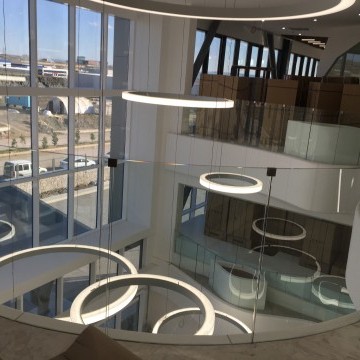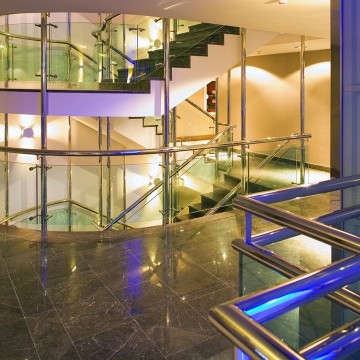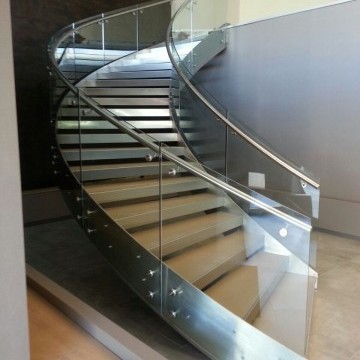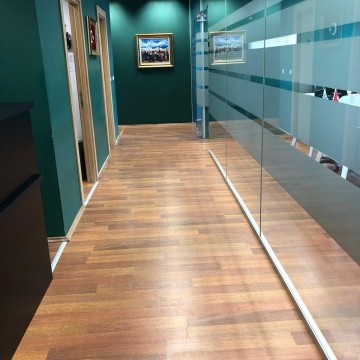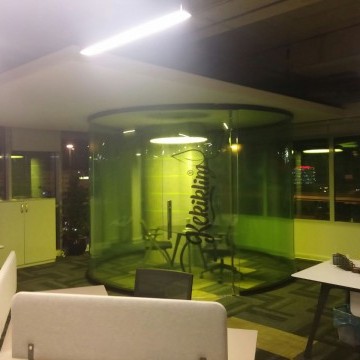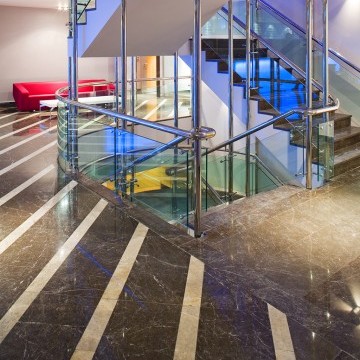Tempered Glass
Tempered Glass
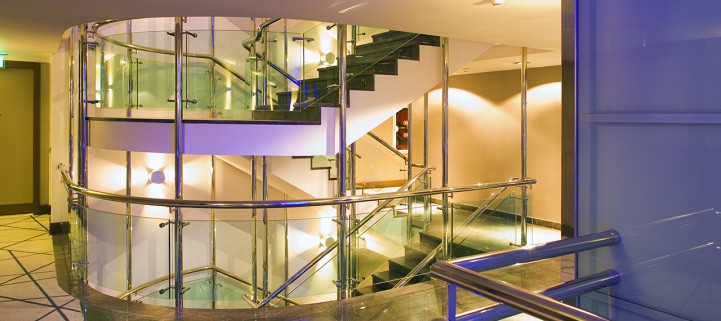
Overview
To increase the mechanical and thermal strength of the glass and provide the predetermined fracture properties, the glass is called TEMPERED GLASS which provides a permanent surface compression stress with controlled heating and cooling process.
In the event of breakage, the thermally tempered soda lime silicate safety glass is generally broken into numerous small pieces with no sharp edges. This gives the glass safety feature.
As a natural result of the tempering process, it is not possible to obtain a product as flat as tempered glass. This difference depends on the nominal thickness, dimensions and ratio between the dimensions of the glass.
There are two types of humpback;
- Humpback covering the whole plate (general humpback)
- Regional hunchback
Application Types
Tempered Glass is widely used in buildings, interior and exterior facades, furniture sector, durable consumer goods sector (such as refrigerator, oven, kitchen hoods), lighting sector, automotive sector, ship and air transportation vehicles and increasingly in all areas of our lives.
However, the most common use is the building sector. For this reason, TS EN 12150 / 1-2 STANDARD, which is accepted for TEMPERED GLASS PANELS USED IN BUILDINGS, is the most widely known standard.
There are different standards for tempered glass used in non-structural areas, as well as standard EN 12150 / 1-2 for non-standardized areas.
There is no standard that has yet to be developed for curved tempered glass. However, TS EN 12150 / 1-2 standard is taken as reference.
Thermally TEMPERED SAFETY GLASSES are 4-5 times more resistant to mechanical impact and loads than normal flat glass.
The thermal properties of thermally tempered soda lime silicate safety glass do not change up to 250 ° C for continuous use and are not affected at temperatures below 0 ° C. Resistant to sudden changes in temperature, and withstands temperature differences up to 200 K
TEMPERED GLASSES USED IN BUILDINGS must be identified with CE marking like all other glass materials. As it is known, CE marking of a product means that the product does not present a danger to human beings and other living things. CE marking is a mandatory marking for all building glass circulating in the European Union.
However, many companies do not meet the requirements for CE marking and produce illegal tempered glass and put it on the market.
KRİS GLASS DECORATION applies the CE Marking requirements and CONFORMITY ASSESSMENT specified in TS EN 12150/2 for thermally tempered glass used in buildings. In addition, in accordance with this standard, in the scope of FACTORY PRODUCTION CONTROLS, it performs the TEST and CONTROLS required for each order in each shift. Moreover, it not only declares that it has carried out these tests and its products conform to the European Community, it also communicates the test and control results it carries out for each customer to its customers, thus taking a transparent path in terms of reliability and sustainability. Moreover, all Tests and Controls can be carried out under the supervision of customer technical personnel if desired.
Our factory’s TEMPER LINE, can produce all kinds of FLAT TEMPERED GLASS.


